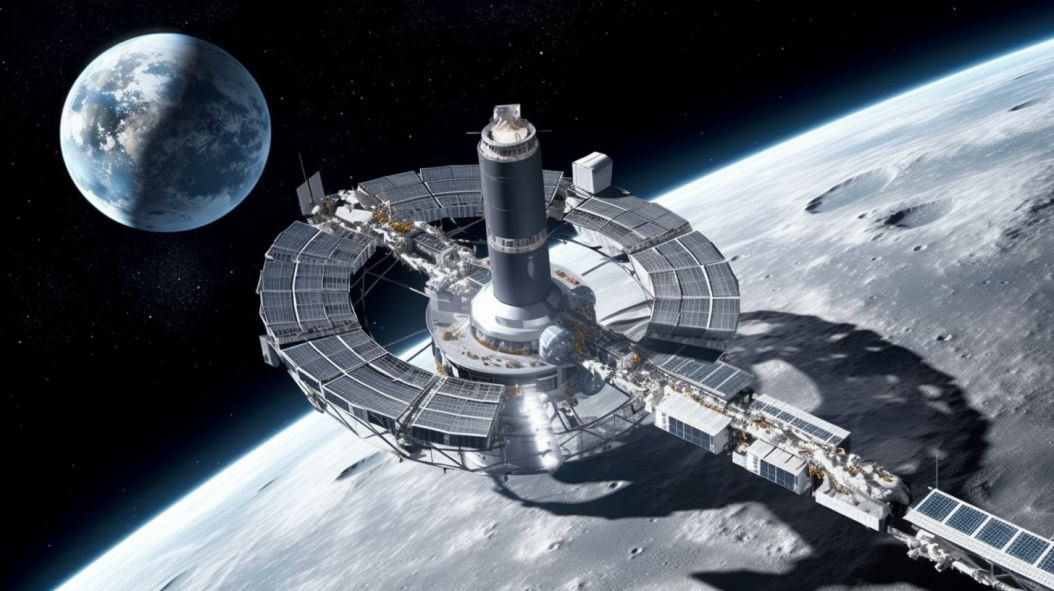The Lunar Gateway: A New Frontier in Space Exploration

The concept of a lunar orbital station, or lunar gateway, has captured the imagination of scientists, engineers, and space enthusiasts alike. This ambitious project represents a new frontier in space exploration, with far-reaching implications for science, technology, international collaboration, and more. In this post, we’ll explore the key aspects of the lunar gateway and delve into the logistics of building such a station, including the number of launches required by SpaceX’s Falcon Heavy or Starship.
1. A Gateway for Lunar Exploration
The lunar gateway serves as a staging point for missions to the lunar surface. It allows for more flexible and efficient exploration, enabling crews to travel to the orbital station and then descend to the Moon’s surface in specialized landers.
2. Scientific Research Opportunities
From studying lunar geology to space weather, the station hosts scientific instruments and experiments that provide unique insights into our universe. The research conducted here could revolutionize our understanding of space and Earth.
3. Fostering International Collaboration
Building and maintaining the lunar gateway requires collaboration between multiple countries and space agencies. This fosters international cooperation and the sharing of knowledge and resources, strengthening global ties.
4. Support for Deep Space Missions
The station can act as a waypoint for missions to more distant locations, such as Mars. It provides a location for refueling, resupplying, and crew transfer, making deep space exploration more feasible.
5. Technological and Commercial Innovation
The challenges of constructing and operating the lunar gateway drive technological innovation and offer commercial opportunities. From lunar tourism to new technologies with Earth applications, the possibilities are endless.
6. Inspiration, Education, and Strategic Presence
The lunar gateway symbolizes human achievement and exploration. It inspires new generations, fosters interest in STEM fields, and may even serve as a strategic asset for nations.
7. Estimated Cost of the Lunar Gateway
Building the lunar gateway is a significant investment. The estimated cost for the modules themselves ranges from $20 to $30 billion, depending on the design and complexity. The launches, whether using Falcon Heavy or Starship, could add an additional $1 to $2 billion to the total cost. These figures underscore the magnitude of the project and the commitment required to make it a reality.
8. Building the Lunar Gateway: Falcon Heavy and Starship
Constructing the lunar gateway is no small feat. It requires careful planning, cutting-edge technology, and a series of complex launches. SpaceX’s Falcon Heavy and Starship are two potential vehicles for this task.
Falcon Heavy
Falcon Heavy, with its impressive lift capacity, could play a vital role in transporting modules and supplies to the lunar gateway. Depending on the size and weight of the components, it’s estimated that building the station might require anywhere from 10 to 15 Falcon Heavy launches.
Starship
Starship, SpaceX’s next-generation spacecraft, offers even greater capabilities. With its enormous payload capacity and potential for in-orbit refueling, Starship could reduce the number of required launches. Preliminary estimates suggest that 5 to 8 Starship launches could suffice to assemble the lunar gateway.
Conclusion
The lunar gateway represents a bold step forward in space exploration. From scientific discoveries to international collaboration and technological innovation, the benefits are manifold. The role of launch vehicles like Falcon Heavy and Starship underscores the complexity and excitement of this endeavor. As we look to the stars, the lunar gateway stands as a testament to human ingenuity and our unending quest to explore the unknown.